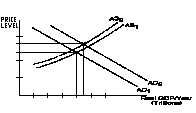
 William
Rainey Harper College
William
Rainey Harper College
MACROECONOMICS ONLINE!
Practice Test #1 - The 5 Es
Practice Test #1 - The 5 Es
|
|
|
|
Select the BEST answer from the options available. There is no time limit and I have no way to know if you looked online for the answers, so I will give you 5 points as long as you submit any answers at all. I do recommend that you "give it a try" and take the quiz without looking up the answers. I will send you the correct answers after you take the quiz.
1. The price of plywood rising after a hurricane hits Florida is an example of which of the 5 Es?
2. The "E" that supports the concept of free trade is:
3. Economic growth helps reduce scarcity by:
4. The economic principle that is used to explain how EQUITY helps society achieve the maximum satisfaction possible from its limited resources is:
5. Which of the following is NOT one of the three choices available to a society to deal with scarcity?
6. When the Coca-Cola company lays-off 6,000 employees, assuming that the quantity of soft drinks they produce does not decrease, may be considered GOOD for society because:
7. What is the "Economic Problem" (sometimes called the "Economizing Problem")?
8. The richest quintile (20%) of the US population receives about what percent of income?
9. "Secretaries should be typing letters and truck drivers should be driving trucks" is an example of:
10. Using our resources to produce more sport utility vehicles and fewer small cars is an example of: